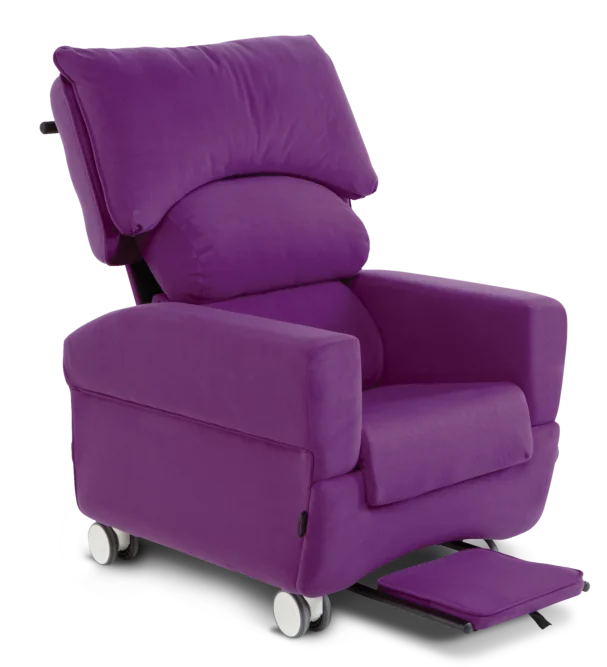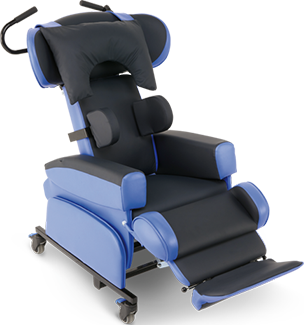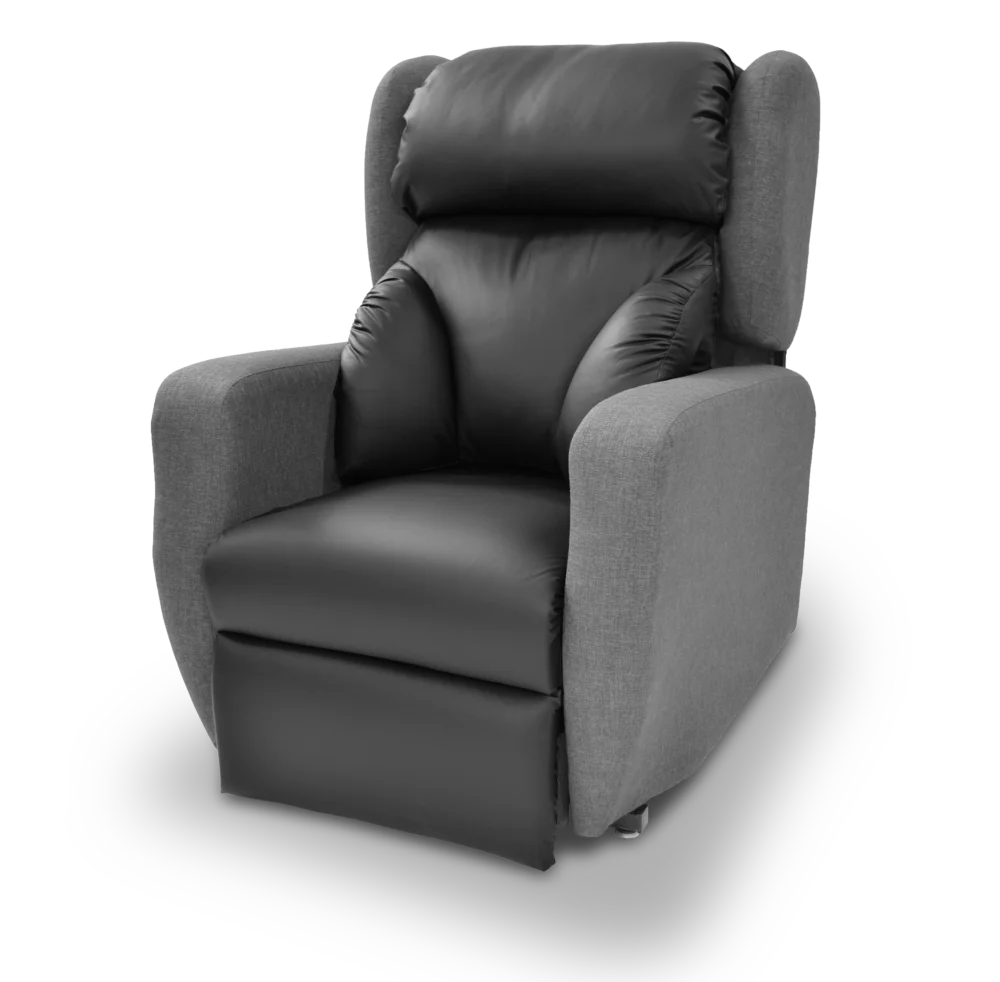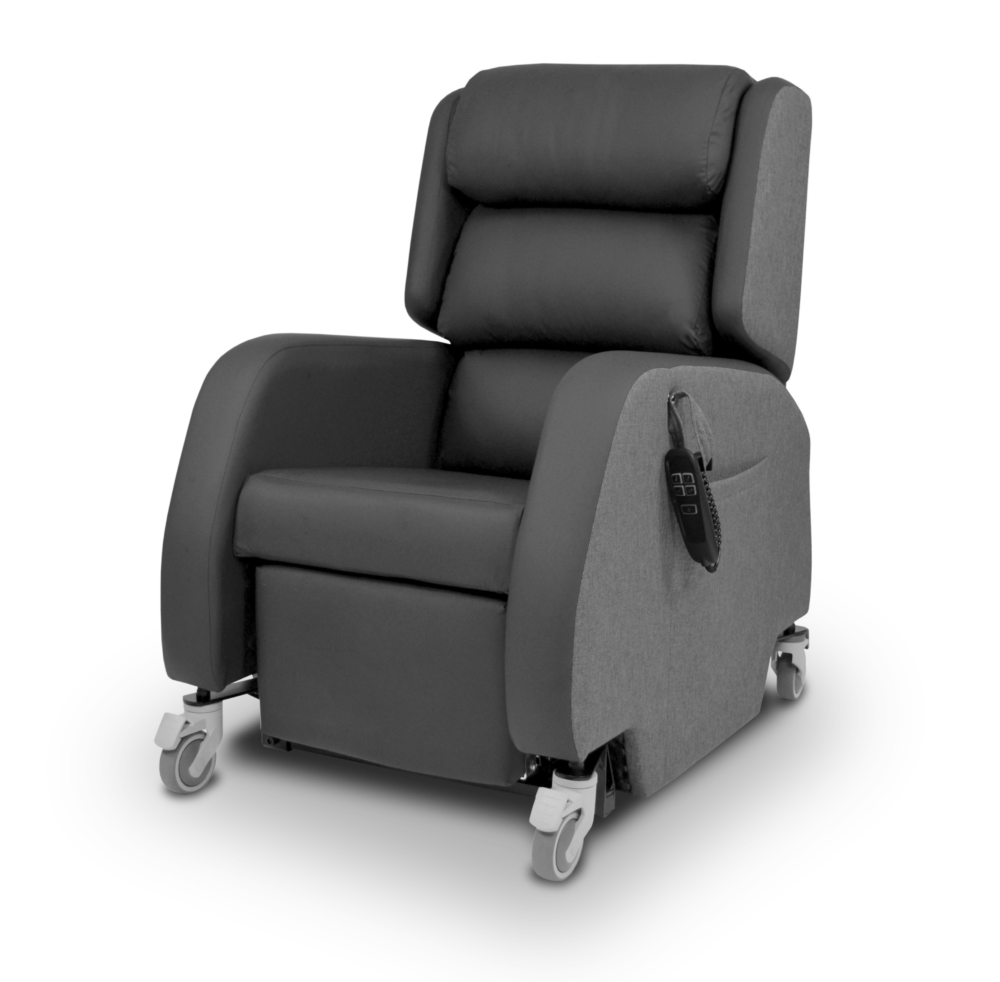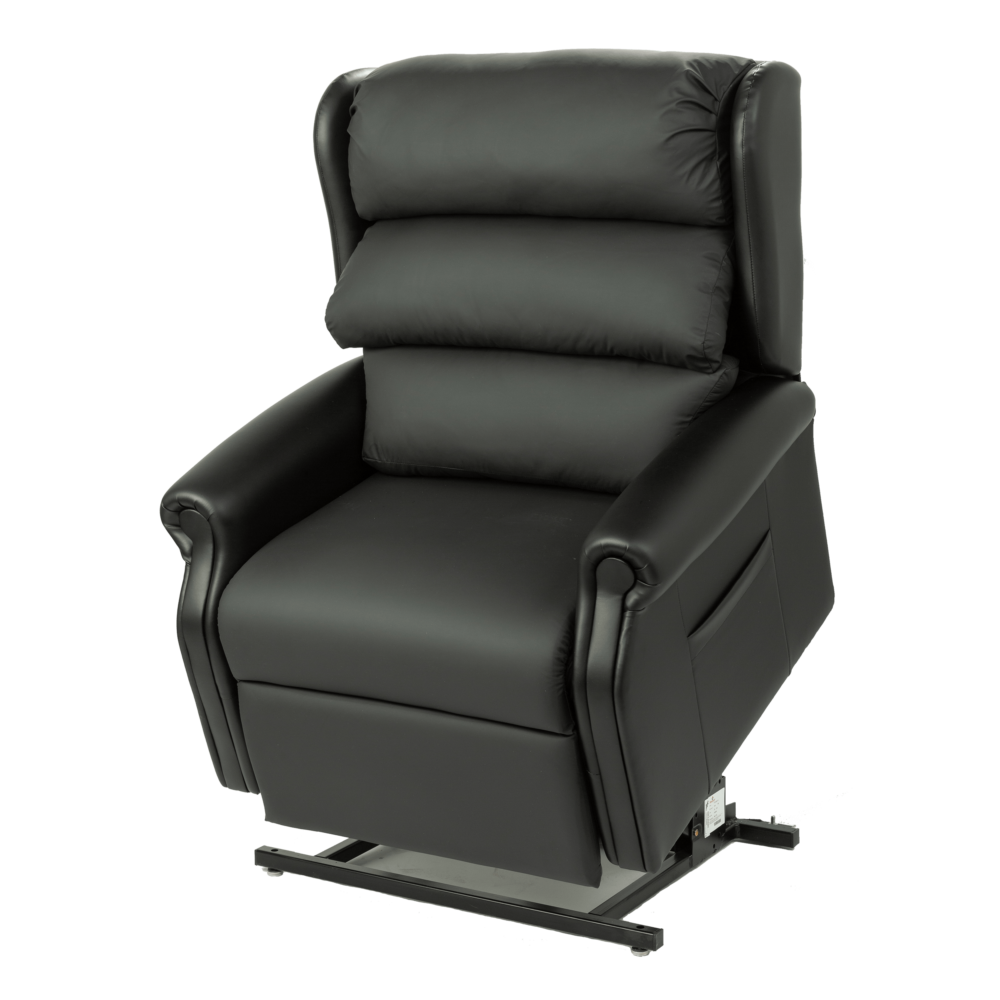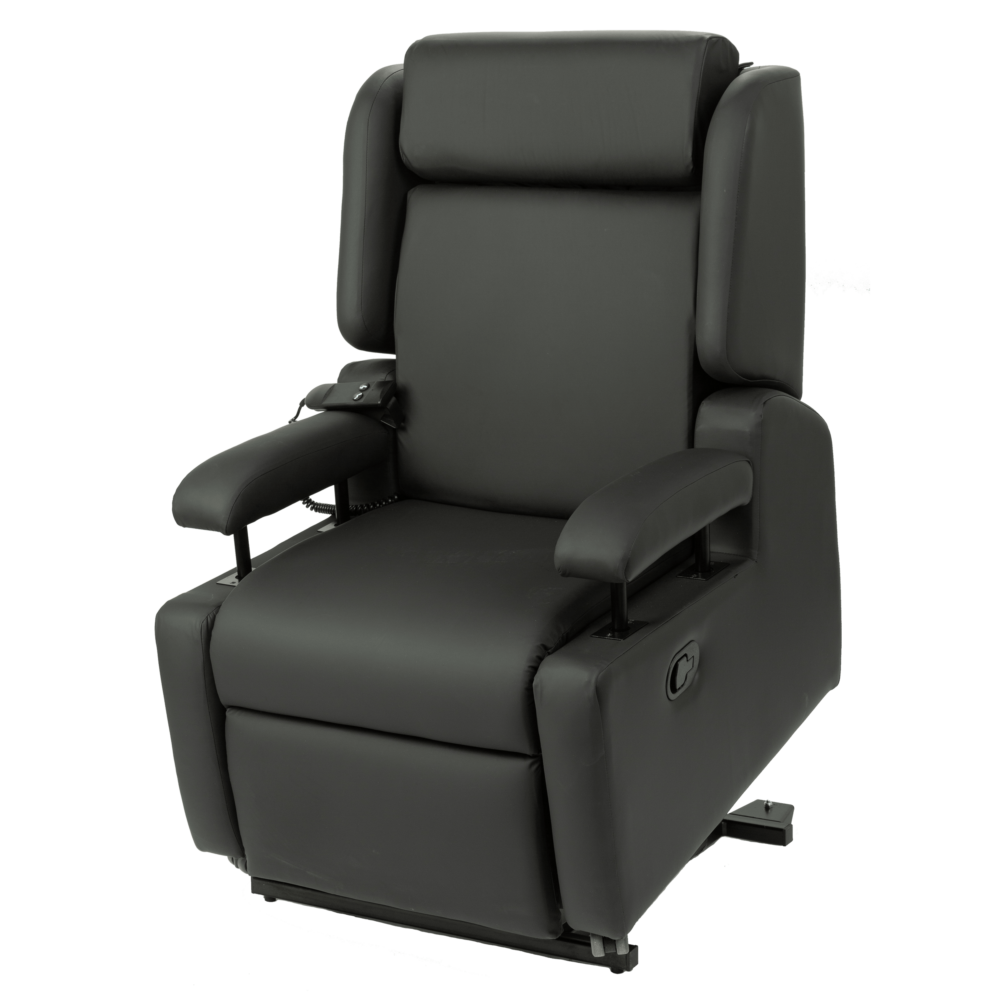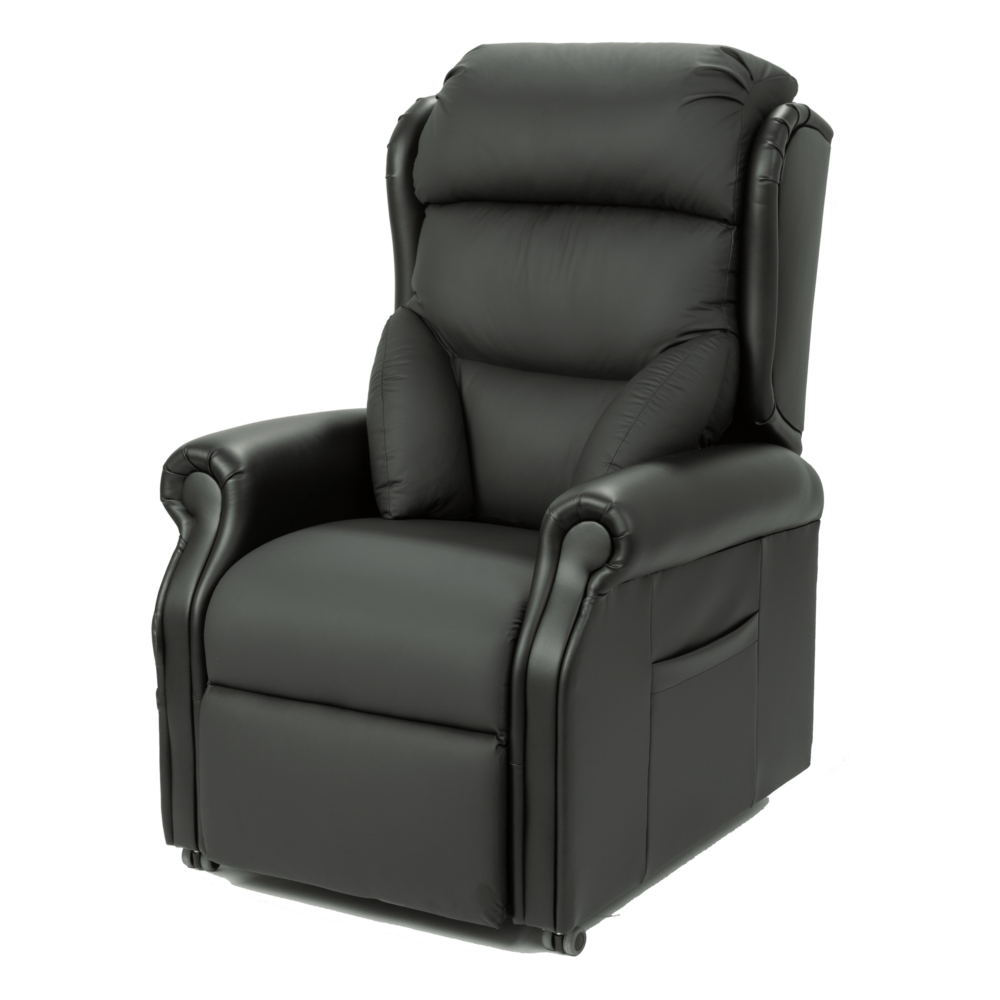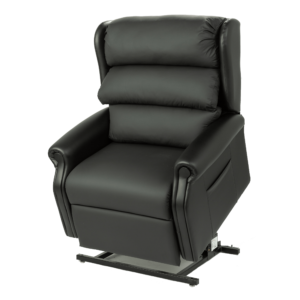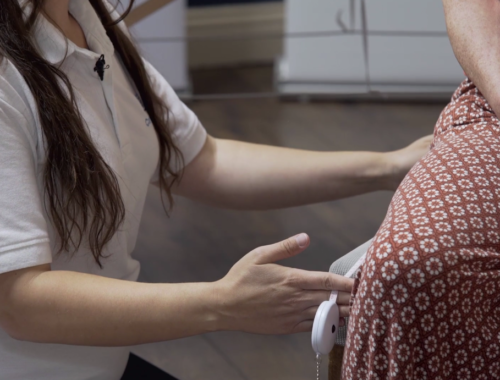Specialist Seating for the Plus Size Population
Why is specialist seating important?
Every chair must be set up to fit the individual user – supporting their posture appropriately and ensuring maximum contact with the support surface to distribute weight evenly, whilst maintaining comfort and independence. It is critical that the seating prescription and subsequent set-up are based on the individual’s body shape and size determined during the seating assessment; if it is not then it can cause more harm than good. The way in which the chair is set up influences positioning, which can consequently impact the risk of secondary complications, including postural deterioration, pressure injury and reduced quality of life.
Specialist seating aims to allow individuals, who might otherwise have difficulty, achieving their optimum sitting posture to sit out comfortably, interact with their environment, participate in activities of daily living and enhance physiological function.
What seating considerations are needed for the plus-size population?
An individual with increased body weight and size, often referred to as ‘bariatric’ (bariatric specialist seating), may present with any of the following postural challenges:
- General weakness
- Fatigue
- Pain
- Increased soft tissue
- Pelvic instability
- Anterior pelvic tilt
- Posterior pelvic tilt
- Increased lumbar lordosis
When prescribing specialist seating, the following considerations can ensure safe and appropriate chair set-up and use:
- Careful attention to the equipment’s maximum user weight limit is needed to ensure safe and appropriate use. There is also a need to be mindful of the potential for weight fluctuation; therefore, an adjustable chair that can adapt to changing needs is essential.
- The correct seat depth is critical to encourage pelvic stability and to ensure the maximum surface area is in contact with the chair to reduce interface pressures.
- Ensuring lateral pelvic stability through correct seat width is also imperative to reduce the tendency for the user to lean or shuffle the pelvis. The widest point to measure may not necessarily be across the hips as excess tissue may be present elsewhere such as the top of the thighs.
- Improved pelvic positioning and the correct seat height can improve sit to stand transfers, reducing the need for manual handling. This will empower those individuals to continue being mobile and thus physically active.
- Attention to a gluteal shelf may be indicated and can be accommodated by removing filling from the lower back support. Without appropriate posterior support, the increased gluteal shelf can push the person anteriorly increasing shear and friction forces; it can also increase the risk of falling out of the chair and undesirable postural changes such as a posterior pelvic tilt.
- A panniculus or pannus in the lower abdomen may also be present and its size will need to be considered when reviewing the safe working load of the leg rest if it extends down.
- Larger calves or oedematous lower legs can position the lower limbs too far forward restricting knee flexion and resulting in inadequate foot support. A negative angle leg rest can help accommodate larger lower limbs whilst maintaining optimum knee flexion position; weight can then be evenly distributed through the feet. The negative angle can also allow more stable placement of feet for sit to stand transfers. There is a need to ensure the safe working load of the leg rest isn’t exceeded.
- Pressure care should always be addressed to reduce the risk of developing or worsening pressure injuries as a result of increased interface pressures and unequal loading of tissues; optimum weight distribution and a regular change of position are key1.
To ensure a truly holistic approach, the caregivers’ needs should also be considered.
Seating individuals who are obese can pose risks to their family, friends and/or support staff, as their unique body shape and their increased weight and size can increase the risk of injury. Powered functions and heavy-duty castors can make chair use and manoeuvrability smoother and safer for the individual and their support network within their environment.
What is the best chair to support the plus-size population?
The HydroTilt XL includes all the tried and trusted features of the much-loved HydroTilt but has an increased 35stone maximum user weight. It is an ideal solution for plus-size individual prescriptions; its adjustability and choice of accessories make it configurable for a wide range of seating needs in domestic, health and social care settings. It is particularly suited for those who present with obesity, lymphoedema, osteoarthritis or those recovering from a stroke.
The HydroTilt XL is a robust supportive chair that offers comfort with optimum posture and pressure management for individuals with increased body weight and size:
- Adjustability can ensure safe and appropriate chair set-up individualised to the user based on their unique body shape to promote postural stability.
- Powered tilt-in-space, if safe and appropriate, can further improve pelvic stability and positioning by encouraging the pelvis to remain at the back of the chair without affecting the critical angles for sitting.
- Powered tilt-in-space can also promote energy management by allowing periods of rest, and encouraging pressure redistribution away from the buttocks to reduce the risk of pressure injury.
- Integrated WaterCell Technology can further encourage maximum support with the aim of managing pressure injury risk.
- The reconfigured waterfall back can allow extra space to comfortably accommodate a gluteal shelf improving pelvic stability. The filling can also be reconfigured to correct or accommodate an increased thoracic kyphosis or lumbar lordosis.
- Where indicated, a backrest wedge can be utilised to adjust the user’s hip angle if pressure needs to be relieved of the abdomen.
- The negative angle leg rest can allow a more stable placement to assist with standing, empowering the individual.
- Four braked heavy-duty castors with sealed bearing hubs offer enhanced durability and smoother manoeuvrability. With the brakes applied, the user can also confidently transfer from the chair without fear of the chair moving.
- To help in hospital settings or multi-user environments, where attention to IPC is critical, specialist covers are available; Velcro is replaced in all exposed areas with plastic profile fittings, and exposed seams are minimised.
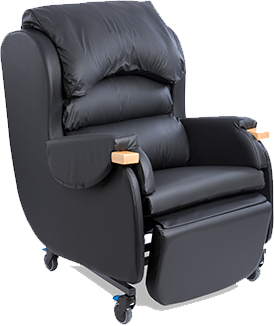
If a rise and recline chair is indicated then The Ashburton will combine exceptional functionality with higher weight capacities to support the plus size individual with an impressive 40 stone maximum user weight and a 25 stone leg lift system. The following features can promote well-being and dignity for both the user and their support network:
- A rise and recline chair can increase independence by allowing the individual to transfer with limited or no assistance, whilst also supporting their postural and pressure care needs.
- A Reflex Foam seat cushion as standard provides maximum comfort and support.
- Leg rest elevation helps the user to relax and can help reduce fluid build-up in the legs, particularly for individuals with oedema.
- A range of back choices is also available by special request, including a two or three-tier waterfall back or lateral back cushion.
- The waterproof fabrics combine maximum abrasion resistance with a specially engineered low friction surface to minimise the risk of shear.
- Complete vapour permeable removable seat wraps and cushions can aid infection prevention and control, whilst being breathable and multi-stretch to allow the cushion to contour to the individual for optimum pressure distribution.
- Robust and supportive arms for optimum user handling to enable effective transfers and repositioning within the chair.
- An integrated battery backup system for complete safety during a shortage of power supply to the environment.
- A five-year warranty on the frame and electrics to offer peace of mind and confidence in the high quality of CareFlex seating.
We offer a free no-obligation assessment, so please do not hesitate to contact us to discuss any queries.

